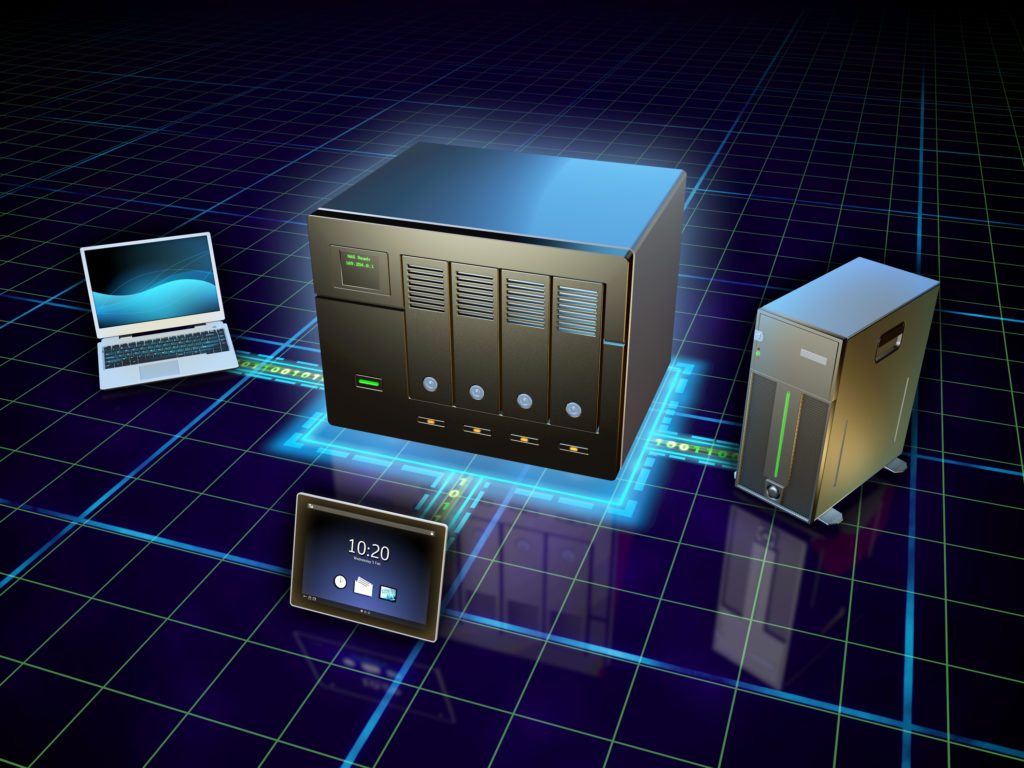What is Storage Area Network or SAN, What is Network Attached Storage or NAS and what is Disk Attached Storage or DAS?
Lets Start with the most simplest form of storage which could be present in your Home office called DAS
DAS Stands for “Direct Attached Storage.” DAS refers to any storage device connected directly to a computer. Examples include HDDs, SSDs, and optical drives. While DAS can refer to internal storage devices, it most often has an external hard drive
A simple example of DAS is an external hard drive connected through a Universal Serial Bus (USB) cable. When we discuss about storage, we mean multiple drives, array of disks acting together in some way. The DAS concept is the same whether it’s one or 24 drives.
SAN or storage area network, it’s a dedicated network, SAN is literally a separate network devoted entirely to storage. SAN is used for data storage and this network consists of multiple disk arrays, switches and servers, . It is interconnected with Fiber channel and connected to the outside world through a Fiber channel switch or bridge. It is a special high-speed network that stores and provides access to large amounts of data, it accesses the data as if it was a local hard drive.
NAS or Network Attached storage, If you wanted to store data in a centralized location, where it can be accessed from all of your devices on your network, You can do this by using a network attached storage device.
a network attached storage device (NAS) shares files over the network. Theoretically it is almost identical to the external USB hard drive, except instead of a USB cable connection, a NAS will be using an Ethernet connection or some networking cable like LAN. NAS devices have a shareable resource. Multiple users and computers can use that resource.
NAS is a box that will have multiple hard drives in a RAID configuration for redundancy and, it’ll also have a network interface card that will directly attach to a switch or router.
The Protocol that SAN uses is iSCSI, Fiber Channel
NAS uses NFS protocol
DAS uses SATA, SAS protocol
The Type of Storage that SAN uses is Block Storage, NAS uses Block Storage, DAS uses File storage
Advantages and Disadvantages of SAN
It is a Fast Network since it is a dedicated Network
SAN is scalable and redundant, Any number of storage devices can be added as needed
SAN maintenance can be done with zero downtime, We can upgrade, replace defective drives, backup our data without taking any servers offline.
Disadvantages of SAN
SANs are very expensive as Fibre channel technology is expensive and maintenance requires a higher degree of skill
Since it is expensive only Large corporations can afford it
Better performance will still be found using DAS hardware
It requires multiple static IP Addresses
Advantages or Disadvantages of NAS
NAS uses shared resources
It is easier to setup and configure versus SAN
It allows users permissions, folder privileges, restricted access to documents, etc
Disadvantages of NAS
It has a Single point of Failure
NAS is not reliable for any database like mysql/postgress SQL as it uses NFS (network file system)
It has slower latency and potentially maximum data-transfer issues because it shares LAN with other Resources
Suitable for Medium Sized or small size corporations
Advantages and Disadvantages of DAS
DAS is almost always faster, cost effective and scalable
It is simpler to setup and configure over NAS or SAN
It does not use IP addresses. Network is not necessary, Faster and better latency over SAN or NAS
Disadvantages of DAS
Dedicated resources are needed for a single computer
DAS cannot be used over the network
Usable mostly for Home Office or small corporation



